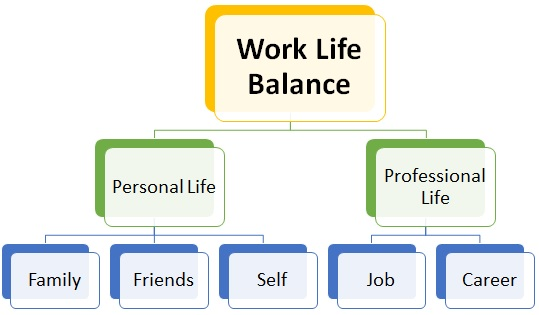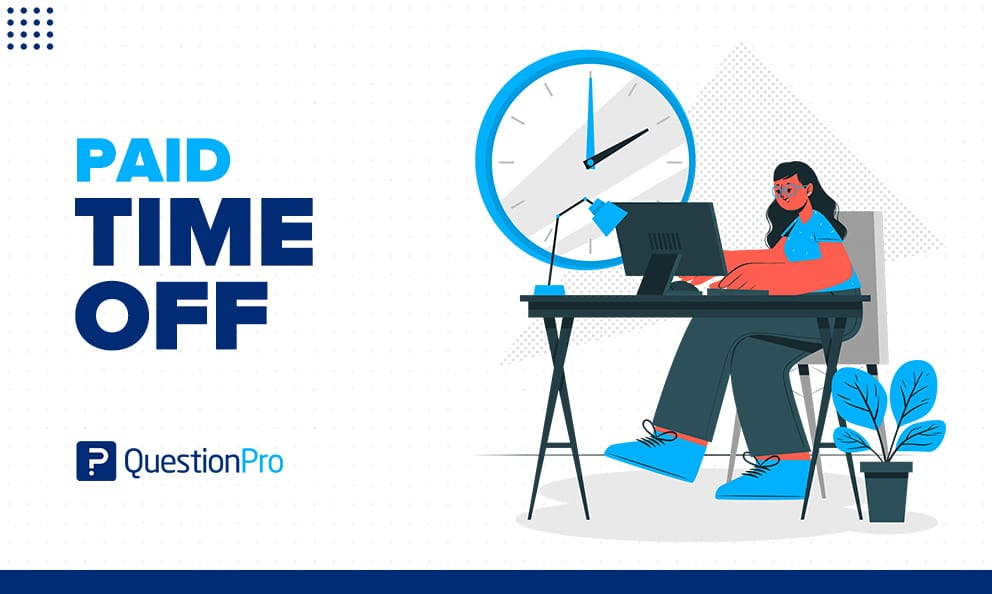Comments
- No comments found

When it comes to finding the right balance between work and personal life, Paid Time Off (PTO) can be a valuable tool.
It provides employees with the opportunity to take time off from work for various reasons such as vacations, sick days, or personal appointments. While PTO can be helpful in achieving work-life integration, it is essential to find the right balance that meets individual needs.
With the rise of remote work and flexible schedules, many employers have started offering unlimited PTO policies, which means that employees can take as much time off as they need without any restrictions.
While this may sound like a dream come true for many people, it also brings its own set of challenges. In this article, we will explore how PTO and work-life integration go hand in hand and discuss strategies for finding the right balance that works for everyone.

Work-life integration is a concept that has gained traction in recent years as individuals strive to balance their professional and personal lives.
Unlike work-life balance, which is often seen as a tradeoff between the two, work-life integration involves seamlessly blending the two together.
This can include working from home or flexible hours that allow employees to attend to personal responsibilities while still meeting work demands.
The rise of technology has made it easier than ever for individuals to integrate their work and personal lives.
With laptops, smartphones, and other devices, employees are able to respond to work emails and complete tasks outside of traditional office hours.
However, this has also led to concerns about burnout and the blurring of lines between work and leisure time.
Despite these concerns, many individuals find that work-life integration allows them greater flexibility and autonomy in managing their schedules.
By being able to attend to personal responsibilities while still fulfilling professional obligations, they are better able to achieve a sense of balance in their lives overall.
Defining work-life integration is crucial in finding the right balance for individual needs. It involves combining work and personal life into one, creating a seamless transition between the two. Work-life integration aims to eliminate the traditional boundaries separating work and personal life, allowing individuals to have more flexibility in managing their time and achieving their goals.
However, it is equally important to maintain a balance between work and personal life. While work-life integration provides flexibility, it can also lead to burnout if not managed properly. Overworking oneself can negatively impact physical and mental health, as well as relationships with family and friends.

Thus, balancing both aspects of life is essential in achieving overall well-being. Taking breaks from work and engaging in leisure activities can help maintain this balance. It allows individuals to recharge their energy levels, reduce stress, and improve productivity in the long run.
Incorporating self-care practices such as exercise or meditation can also benefit mental health and contribute positively to overall quality of life. Striking a balance between work and personal life is crucial for success in both areas and for overall happiness.
Taking time off work is essential for maintaining a healthy work-life balance. Paid Time Off (PTO) provides employees with the opportunity to take a break from work and attend to personal matters like family vacations, medical appointments, or mental health days. PTO plays an important role in promoting employee well-being and job satisfaction.
When it comes to integrating work and personal life, PTO can help reduce stress levels and prevent burnout. It allows employees to recharge their batteries, spend quality time with loved ones, pursue hobbies, or simply relax.
By taking advantage of PTO opportunities, employees can achieve a better balance between work and personal life, which can lead to increased productivity and engagement at the workplace.
It's important for individuals to understand how much time off they need to maintain their physical and mental health while keeping up with their professional responsibilities. Overusing PTO or not taking enough time off can create imbalances that affect both personal life and job performance.
Therefore, finding the right balance between using PTO effectively and fulfilling work obligations is crucial for achieving optimal work-life integration.
After understanding the role of PTO in work-life integration, it's important to consider the pros and cons of unlimited PTO policies.
On one hand, employees may feel more empowered to take time off when they need it without worrying about accruing a limited amount of days. This can lead to better mental health and work-life balance.
However, unlimited PTO policies can also create ambiguity and confusion around how much time off is acceptable. Without clear guidelines or expectations, employees may be unsure if they're taking too much time off or not enough.
Additionally, some companies may use this policy as a way to avoid paying out unused vacation days upon separation from the company.
It's important for individuals to weigh the potential benefits and drawbacks before deciding if an unlimited PTO policy is right for them. Communication with managers and coworkers can help clarify expectations and ensure that everyone is on the same page regarding time off.
Ultimately, finding a balance between work responsibilities and personal needs is key to achieving a fulfilling work-life integration.
Managing paid time off (PTO) effectively is essential to maintaining work-life integration. PTO provides employees with the opportunity to take a break from work and attend to personal matters, but it can also lead to feelings of guilt and stress if not managed properly. Therefore, implementing strategies for managing PTO can help individuals find the right balance between work and personal life.
One effective strategy for managing PTO is planning ahead. By scheduling time off in advance, individuals can ensure that their workload is manageable before they leave and avoid the stress of last-minute arrangements. Additionally, having a clear plan for how the time off will be spent can help individuals make the most of their break and return to work feeling refreshed.
Another strategy for managing PTO is setting boundaries. It's important for individuals to communicate their availability during their time off and set clear expectations with colleagues or clients. This can include setting up an out-of-office message, delegating tasks, or arranging coverage for urgent matters. By doing so, individuals can fully disconnect from work during their time off and prioritize their personal needs.

Managing PTO effectively requires planning ahead and setting boundaries. By implementing these strategies, individuals can experience the benefits of taking time off without sacrificing their work-life integration. It's important for individuals to remember that taking care of themselves is crucial to being productive and successful in both their personal and professional lives.
When it comes to taking time off for personal reasons, communicating with your employer is key. Many employees fear that asking for PTO will make them appear uncommitted or replaceable. However, the reality is that most employers understand the importance of work-life balance and offer PTO as a benefit for that very reason.
To effectively communicate your PTO needs with your employer, start by familiarizing yourself with company policy. This information can typically be found in employee handbooks or on the company website.
Once you know the guidelines, consider scheduling a meeting with your supervisor to discuss your needs and any upcoming events or trips where you'll need time off. During this conversation, be clear about the dates you need off and make sure to give your supervisor plenty of notice.
It's also important to be honest about why you're taking time off and emphasize how it will benefit both you and the company in the long run. Remember, taking care of yourself outside of work ultimately makes you a better employee when you return refreshed and recharged.
By effectively communicating your PTO needs with your employer, you can find a healthy balance between work and personal life that works for both parties involved. With clear expectations set upfront, there's less room for miscommunication or misunderstandings down the line.
Remember, everyone deserves some time away from work to rest and recharge – don't be afraid to ask for what you need!
Implementing flexible work arrangements can be a game-changer for employees looking to achieve a better balance between work and personal life. It can allow them to manage their time more efficiently, reduce commuting stress, and increase job satisfaction. Flexibility in the workplace can also benefit the employer by improving productivity, reducing absenteeism, and increasing employee retention.
One popular form of flexible work arrangement is telecommuting or remote work. With advances in technology, many jobs can now be done from home or any location with an internet connection. This arrangement allows employees to avoid long commutes, save money on transportation costs, and have more control over their work environment. However, it requires clear communication channels and trust between the employer and employee to ensure that the work is being done effectively.
Another type of flexible work arrangement is flexible scheduling. This means that employees have some control over when they start and end their workday or are allowed to take breaks during the day as needed. This approach allows employees to schedule around family obligations or appointments without sacrificing productivity or quality of work. Employers who offer this arrangement may see increased motivation and loyalty from their staff as a result of having greater autonomy over their schedules.
By implementing flexible work arrangements, employers show that they value their employees' well-being and understand that everyone has unique needs outside of work. It creates an environment where employees feel trusted and respected while still being able to meet their professional responsibilities.
It's important to consider each individual's situation when offering these arrangements as there may be limitations based on job requirements or business needs. Ultimately, finding the right balance between flexibility and meeting business objectives will lead to happier employees and a healthier bottom line for the company.
As we have discussed in the previous section, implementing flexible work arrangements can greatly help in achieving work-life integration. However, it's not just about work arrangements, but also about how we use our PTO or paid time off. PTO is an essential part of work-life balance as it allows us to take a break from work and focus on personal well-being.
Maximizing the benefits of PTO for personal well-being is crucial for achieving a healthy work-life balance. First and foremost, it is important to plan ahead and schedule your time off in advance so that you have something to look forward to. This can help alleviate stress and anxiety caused by work pressures.
Secondly, make sure to disconnect from work during your PTO. Avoid checking emails or taking phone calls related to work. Instead, engage in activities that you enjoy such as spending time with family or friends, pursuing hobbies, or simply relaxing and unwinding.
Lastly, consider taking longer breaks such as sabbaticals or extended vacations every few years. This can help you recharge and come back to work with renewed energy and fresh perspectives.
Remember that taking care of yourself should be a priority, both for individual well-being and professional success. By maximizing the benefits of PTO for personal well-being, you'll be able to achieve a healthier work-life balance and ultimately lead a more fulfilling life.
Achieving a balance between work and personal life is crucial for overall well-being.
PTO can play a significant role in attaining this balance by providing employees with the time and flexibility they need to focus on their personal lives without sacrificing their professional responsibilities.
It's important for individuals to communicate their PTO needs with employers and implement flexible work arrangements that work best for them.
By doing so, employees can maximize the benefits of PTO for their personal well-being while still contributing positively to their organization.
Ultimately, it's about finding the right balance that works for each individual's unique needs and circumstances.
Leave your comments
Post comment as a guest